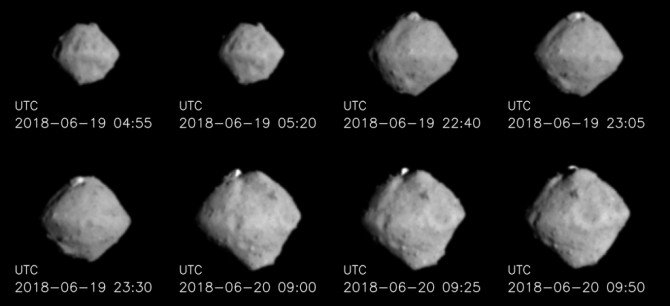Life beyond Earth may form in the coldest depths of space, Ryugu asteroid samples reveal
PAHs may be able to form in cold regions of space, affecting what scientists think about the origins of planets and possibility of alien life.

In 2020, the Japanese spacecraft Hayabusa2 visited the asteroid Ryugu and managed to bring precious samples of the space rock back to Earth. And sure enough, years later, we are still gaining insights about this small asteroid and the environment in which it formed thanks to those samples. Today, scientists released the latest findings from Ryugu — that certain organic compounds called PAHs may be able to form in cold areas in space.
These results may help us to better understand how planet formation, and eventually life, came to be.
PAHs, or polycyclic aromatic hydrocarbons, are ring-shaped complex organic compounds. A good deal of carbon in the universe is contained in these PAHs. You can even see PAHs on Earth, which typically form when something organic doesn't burn completely (think of the leftovers of your campfire or the char left on your BBQ grill). Across space, PAHs are naturally found in nebulas, protoplanetary disks, the interstellar medium and meteorites.
Related: Asteroid Ryugu was born out in the cold, in the solar system's earliest days
The new finding is surprising because it indicates that PAHs can form in cold regions in space and not just hot regions around stars. The scientists, from the Western Australian Organic & Isotope Geochemistry Centre, produced PAHs by burning plants. They then compared these molecules with fragments returned to Earth from Ryugu, and with those found in the Murchinson meteorite that crashed into the southern part of Australia in 1969.

"The bonds between light and heavy carbon isotopes in the PAHs were analyzed to reveal the temperature at which they were formed," one of the authors Kliti Grice said in a statement. "Select PAHs from Ryugu and Murchison were found to have different characteristics: the smaller ones likely in cold outer space, while bigger ones probably formed in warmer environments, like near a star or inside a celestial body."
Because of their carbon content, PAHs are also pretty much some of the building blocks of life. This is further evidence that PAHs may be able to form at cold temperatures, and therefore that life could be fostered in such frigid conditions.
Get the Space.com Newsletter
Breaking space news, the latest updates on rocket launches, skywatching events and more!
Ryugu is a C-type asteroid, which means it contains a significant amount of carbon and water. These types of asteroids act as time capsules and can offer clues to how the solar system formed.
Join our Space Forums to keep talking space on the latest missions, night sky and more! And if you have a news tip, correction or comment, let us know at: community@space.com.
Elizabeth is a freelance science writer. She has a Ph.D. in astrophysics from the University of Texas at Austin and has worked with telescopes all around the world and in space. Now she writes on astronomy, physics, geology, mathematics, and science and technology in society.
-
Chris Gautreau Interesting article but something I'm not understanding. In the article you state PAHs are naturally found in nebulas, protoplanetary disks, the interstellar medium and meteorites. So, why are the results surprising that PAHs would be able to form in cold areas in space?Reply -
billslugg I suppose when they originally found them in the interstellar medium it was assumed they were produced somewhere else, where it was warm.Reply










